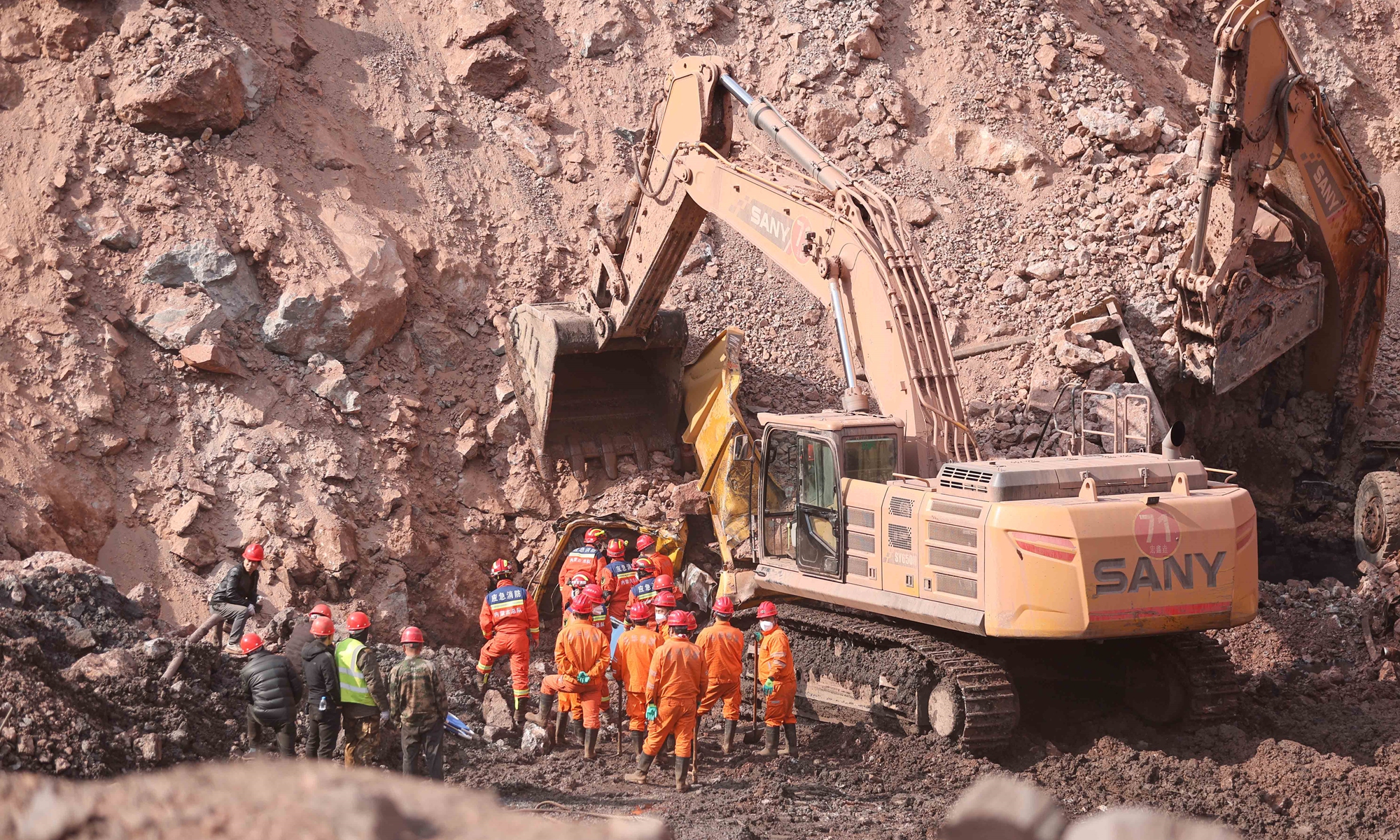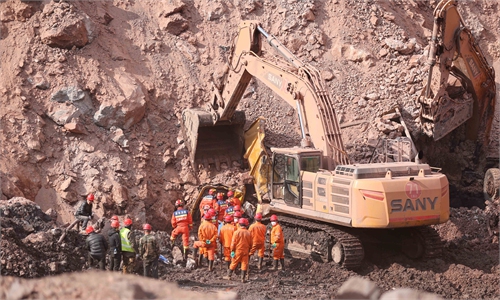China releases new guidelines to strictly regulate coal mines at risk of severe disasters

Rescuers on the site of the collapsed coal mine in Alxa league, North China's Inner Mongolia on February 23, 2023. Photo: Xinhua
A guideline to improve workplace safety in mines aims to eradicate hidden loopholes that lead to accidents by shifting the focus of the country's mine safety management to prevention, Chinese authorities said on Monday at a press conference elaborating on the newly released guidelines.
The guideline is the first framework document for mine safety with the approval of the Central Committee of the Communist Party of China and the State Council since the founding of the People's Republic of China, which means they have great practical significance and far-reaching historical significance, Zhang Xin, deputy director of the National Mine Safety Administration, told the press conference.
The guideline comes at the right time as the national mine safety situation is grim and complex, coal mine accidents have rebounded sharply, open-pit coal mine accidents, and illegal activities such as concealing accidents have occurred frequently since the beginning of 2023, according to a discipline inspection official dispatched to the Ministry of Emergency Management.
One of the highlights of the guideline is that the country will stop building new coal mines with an annual production capacity below 900,000 tons that are also at risk of coal and gas outbursts, or involve complicated hydrogeological conditions. The small scale of these coal mines' production capacity will inevitably have a significant impact on safety investment and safety management of the enterprises, making it highly prone to major accidents resulting in casualties.
The guideline stipulates that the safety facility design review and safety production license approval for coal mines, metal and non-metal underground mines, tailings ponds and other construction projects shall be the responsibility of mine safety supervision departments at or above the provincial level, and shall not be delegated or entrusted to other institutions.
Among the seven provisions of the guideline, six focus on targeted arrangements in improving mining safety - strict mine safety access, the transformation and upgrading of mines, preventing and resolving major safety risks, strengthening the main responsibility of enterprises, implementing the responsibility of local party and government leadership and department supervision, and promoting the legal management of mine safety. The seventh provision stipulates how to strengthen organization and accountability and establish a coordination mechanism.
At a press conference, Xue Jianguang, an official from the National Mine Safety Administration, revealed that following the introduction of the guideline, the country will focus on improving laws and regulations on mine safety production standards and comprehensively revising the Mine Safety Law.
He revealed that the current revision has been officially launched, and it is in the process of research, demonstration and drafting.
Since the beginning of this year, overall mine safety in the country has been stable, with the number of mining accidents in the country dropping by 13 percent. The total number of non-coal mine accidents continues to decline, but coal mine accidents have rebounded, data provided by the National Mine Safety Administration in July shows. For instance, the country's largest open-pit coal mine accident since the establishment of the People's Republic of China occurred in North China's Inner Mongolia Autonomous Region in February.
The coal mine collapse in Inner Mongolia that killed 53, injured six and caused direct economic losses of over 204 million yuan ($27.99 million) was a production safety accident resulting from major long-term hidden risks.
Global Times

